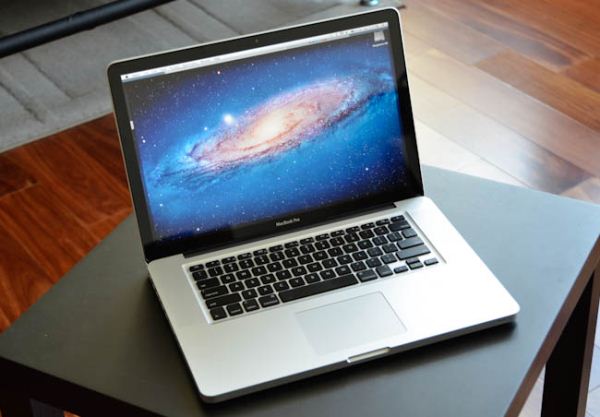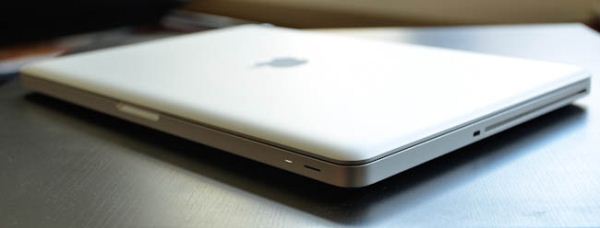The 2012 MacBook Pro Review
by Vivek Gowri on July 18, 2012 2:00 PM EST- Posted in
- Mac
- Apple
- MacBook Pro
- Laptops
- Notebooks
With most of the attention from Apple's hardware refresh event centered around iOS 6 and the new Retina MacBook Pro, the updated 2012 edition of the regular MacBook Pro has flown a little bit under the radar. Basically, it’s just an Ivy Bridge-infused version of the venerable unibody MacBook Pro chassis that we’ve known and loved for the last few years. The details don’t bring any particularly earth-shattering revelations, with 13” retaining the dual-core processor and integrated graphics, while the 15” makes the switch from AMD to Nvidia’s new Kepler-based GT 650M dedicated graphics. Along with Ivy Bridge, the 2012 MBP line gets HD 4000 graphics and USB 3.0 across the board, plus a free update to Mountain Lion when it releases later this summer. Naturally, it doesn’t generate the same kind of excitement that the all-new, all-awesome Retina MacBook Pro does. But is a less headline-worthy computer necessarily a worse one?
It’s pretty difficult to find things to write about the 2012 MacBook Pro hardware. You can essentially sum it up in one paragraph, or even one sentence if you try hard enough. The 2012 MBP looks exactly like the 2011 MBP, which looked exactly like the 2010 MBP, which looked exactly like the post-April 2009 MBP. It’s likely to be the last iteration of the original unibody MBP, giving this body style a 4.5 year run as one of the most instantly recognizable notebook computers on the market. I’m not going to go too far in depth with analyzing the design, because we’ve gone over it a few times over the years (here, here, here, here, here, and here. Oh and here too, just for good measure.)
It’s a solid notebook, that much is certain. From an SKU standpoint, Apple has kept things relatively straightforward, with a high end and a low end for both the 13” and 15” models. Starting at $1199, the MBP13 comes with a 2.5GHz Core i5-3210M, 4GB DDR3, and a 500GB HDD, while the higher end SKU bumps that to a 2.9GHz i5-3520M, 8GB DDR3, a 750GB HDD, and a $1499 pricetag. Other than the updated processor/integrated graphics and the addition of USB 3.0, the 13” is identical to the previous model that we covered in depth last year.
The 15” is a bit more interesting. The base $1799 SKU comes with a quad-core i7-3615QM (2.3GHz) and a 512MB Nvidia GeForce GT 650M dGPU, but makes do with a paltry 4GB of memory and a 500GB hard drive. The standard memory and storage configuration in a nearly-$2000 notebook is pretty unacceptable. This being Apple, upgrade pricing is still a hair away from being highway robbery, but at least the matte WSXGA+ screen upgrade costs a reasonable $100. Thankfully, unlike the rMBP and MacBook Air, you can always opt to buy RAM and storage upgrades on your own.
| 2012 MacBook Pro Lineup Comparison | |||||
| 15-inch Mid 2012 MacBook Pro | MacBook Pro with Retina Display | ||||
| Dimensions | 0.95 H x 14.35 W x 9.82" D | 0.71 H x 14.13 W x 9.73" D | |||
| Weight | 5.6 lbs (2.54 kg) | 4.46 lbs (2.02 kg) | |||
| CPU | Core i7-3615QM | Core i7-3720QM | Core i7-3615QM | ||
| L3 Cache | 6MB | 6MB | 6MB | ||
| Base CPU Clock | 2.3GHz | 2.6GHz | 2.3GHz | ||
| Max CPU Turbo | 3.3GHz | 3.6GHz | 3.3GHz | ||
| GPU | Intel HD 4000 + NVIDIA GeForce GT 650M | ||||
| GPU Memory | 512MB GDDR5 | 1GB GDDR5 | |||
| System Memory | 4GB DDR3-1600 | 8GB DDR3-1600 | 8GB DDR3L-1600 | ||
| Primary Storage | 500GB 5400RPM HDD | 750GB 5400RPM HDD | 256GB SSD | ||
| Optical Drive | Y | Y | N | ||
| Display Size | 15.4-inches | ||||
| Display Resolution | 1440 x 900 | 2880 x 1800 | |||
| Thunderbolt Ports | 1 | 2 | |||
| USB Ports | 2 x USB 3.0 | ||||
| Other Ports | 1 x Firewire 800, 1 x Audio Line in, 1 x Audio Line out, SDXC reader, Kensington Lock slot | SDXC reader, HDMI out, headphone out | |||
| Battery Capacity | 77.5 Wh | 95 Wh | |||
| Price | $1799 | $2199 | $2199 | ||
The unit we’re looking at here is the high-end 15” SKU, with a 2.6GHz i7-3720QM and a 1GB version of the GT 650M, plus 8GB memory and a 750GB HDD. It rings up at $2199, which interestingly is the same as the base rMBP (i7-3615QM/8GB/256GB SSD/1GB GT 650M). I’m mostly certain that it’s not the configuration to get - you’re better served by getting a base 2.3GHz 15”, adding the $100 high-res screen, and grabbing a 256GB SSD (~$250) and an 8GB RAM upgrade (~$50) separately from Newegg or Amazon. Boom. You spend roughly the same $400, depending on your SSD choice (I would go Samsung SSD 830), and end up with a system with a better screen that’s faster in most day to day situations. Unless you have a really specific need for the extra 512MB vRAM or 300MHz clock speed increase, I’d recommend against it.












132 Comments
View All Comments
sambamac - Thursday, July 19, 2012 - link
I've been thinking a lot about it. Ok, the retina is a fine screen. But I will go for the 2012 non retina non-glare 1650x1050, because I will put a 750 7200 rpm (only a additional 56$) and an extra 256 SSD for the system ( I will separate the system from the data ). When the 16GB Modules will be available I will upgrade the memory to 32Gb. I really work on an external monitor. 15" is just too small to do edit or retouch fotos. I really need the portable solution, because I travel a lot. And the possible 32Gb will help a lot to boost photoshop work based on dozens of layers.Freakie - Thursday, July 19, 2012 - link
16GB modules wont ever come for DDR3 in the 204 pin form factor (laptop), so give your hopes up now. If you really want the best photoshop performance then you should be switching to a Windows laptop especially since it's easy to put 32GB on a Windows laptop, create a RAMdisk with a good chunk of that and then put your Photoshop Scratch Disk directory on it. (instant 5GB/s transfer rate on your scratch disk by using your RAM instead of a mechanical or solid state drive). Or if you are dead-set on using OSX then you can easily hackintosh OSX on the laptop and still have the more powerful hardware.sambamac - Thursday, July 19, 2012 - link
Why you know that 16GB modules won't ever come? Is there a technical problem?Yeah, it's a good idea with the Ram Disk....
thanks for input!
Freakie - Friday, July 20, 2012 - link
Yeah basically. RAM follows standards and what-not, which means the people who make the RAM have to follow certain guidelines if their want to be able to use the DDR3 label for the RAM. That way RAM is as compatible as possible. As it stands, the DDR3 standards don't really allow 16GB sticks for laptops because the sticks are too small. They can't do 3D stacking of the memory without being out of spec, to my knowledge. And most RAM is still manufactured on large processes like 48-60nm and so they can't just pack more in on the area they have. We probably wont see 16GB sticks for laptops until DDR4.sambamac - Friday, July 20, 2012 - link
Ok, I see! Thank you for these explanations!arkweld - Thursday, July 19, 2012 - link
I just made the same decision. Anandtech opts for the rMBP because it's better value? Really? What a ludicrous statement.For $2300 you get an MBP with hi-res, optical drive, ethernet, FireWire, more storage capacity, expandability and the exact same battery life, processor and RAM as the $2800 rMBP. A unit which has the only advantage of a arguably better display, negligible perfomance increase and a half-pound weight reduction. Anandtech opt to pay $500 more for less capability.
If you want an SSD to boost your performance you can add one to an MBP at any time in any capacity.
If the future is removing features for a screen of dubious value, then we are going backwards. Especially when you are paying $500 for the privilege.
The0ne - Thursday, July 19, 2012 - link
Yea, your consideration for the type of work you do is inadequate. You should be considering Windows laptop for this. You want both the CPU performance and the GPU to handle the 2D/3D side of things. Sure it may not be as light, or any other reasons but you get your work done fast and "easy". Not entirely sure on the easy word but meh :)sambamac - Friday, July 20, 2012 - link
And which system is adequate?jcannon1018 - Thursday, July 19, 2012 - link
Any ideas on how the lower end model would graphically compare to the high-end model? Running at native 1440x900 with Diablo 3, 512 vs 1gig, huge difference?Deepcover96 - Thursday, July 19, 2012 - link
I went back and forth on which one I would get. The Ethernet port almost pushed me towards the Pro, but the better display on the Air made up my mind. Like you said, The Air and the rMBP feel like the future.